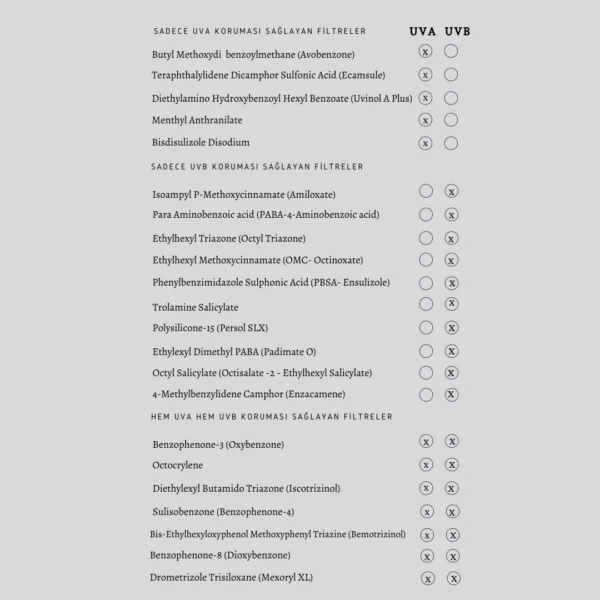What to Consider When Choosing a Natural Sunscreen
As summer approaches, we all start searching for the most effective yet natural sunscreens. While the terms used when talking about sunscreens can be confusing, understanding them is essential to make the right choice for your skin.
What is SPF?
SPF (Sun Protection Factor) indicates how long a sunscreen can protect against harmful UVB rays, which cause sunburns. Simply put, it shows how much longer it takes for your skin to redden with sunscreen compared to without.
For example, if your skin starts to burn in 10 minutes without protection, using a sunscreen with SPF 15 extends this time to 150 minutes.
While higher SPF values increase the duration of protection, the difference in protection percentages is minimal. An SPF 15 product offers 93% protection, while SPF 30 offers 96.7%, and SPF 40 provides 97.5%.
It’s important to note that SPF values only indicate UVB protection, not UVA.
What are UVB, UVA, and UVC rays?
• UVB: These rays are responsible for causing redness, burns, and skin irritation. They account for 1-10% of sunlight reaching the Earth.
• UVA: Making up 98% of the UV rays reaching the Earth, UVA rays penetrate deep into the skin, causing DNA damage, premature aging, and an increased risk of skin cancer. These rays pass through windows and water, and affect you year-round, regardless of the season or location.
• UVC: These rays do not reach the Earth's surface as they are blocked by the ozone layer.
Types of Sunscreens:
Sunscreens are generally categorized into two groups: physical and chemical filters.
• Physical Filters: The FDA and EU approve two physical (mineral-based) filters: Zinc Oxide (ZnO) and Titanium Dioxide (TiO2). Of these, Zinc Oxide is the only one offering protection against both UVA and UVB rays.
Physical filters work by reflecting and scattering UV rays, making them highly effective against UVA and UVB. These filters are safe and do not penetrate the skin. It's important to avoid sunscreens with nano-sized particles, which can be absorbed into the skin.
• Chemical Filters: These are absorbed into the skin and work by absorbing UV rays. While they provide a smoother application than physical filters, some can be absorbed into the bloodstream and may pose risks, including allergic reactions and hormonal changes.
Recent studies by the FDA indicate that certain chemical filters, such as avobenzone and oxybenzone, can accumulate in the bloodstream after regular use.
New-generation chemical filters have been developed to address some of these concerns, but it’s crucial to remember that sun exposure without protection is more harmful than the potential risks of these filters.

Do Natural Oils Provide Sun Protection?
At Rosece, we avoid chemical ingredients and filters that may pose risks to your skin. We use Zinc Oxide, produced with patented MicNo® particle technology, in our sunscreens. MicNo® is non-nano and large enough not to be absorbed by the skin, offering superior protection without leaving a white cast.
SPF only measures UVB protection. When tested, cold-pressed oils show a maximum SPF of 9-10. However, natural oils with high antioxidant content, like some cold-pressed oils, can provide UVA protection, making them important for reducing free radical damage and promoting skin repair.
In sunscreen formulations, combining high UVA-UVB protection ingredients like Zinc Oxide with antioxidant-rich oils offers a natural and safe solution for effective sun protection.
Rosece sunscreens provide broad-spectrum protection, with natural antioxidant ingredients to reduce free radical formation. Thanks to these natural and effective formulations, you can confidently protect your skin while nurturing it.
As global warming and climate changes expose us to UV rays more intensely throughout the year, we recommend using a sunscreen that protects against both UVB and UVA rays year-round.
Even with a strong sunscreen, avoid sun exposure during peak hours, wear hats and sunglasses, and choose clothing that covers your skin. Always seek shade when possible.